 Our World
Our World  Our World
Our World  Movies and TV
Movies and TV The 10 Coolest Stars to Set Sail on The Love Boat
 History
History 10 Things You Didn’t Know About the American National Anthem
 Technology
Technology Top 10 Everyday Tech Buzzwords That Hide a Darker Past
 Humans
Humans 10 Everyday Human Behaviors That Are Actually Survival Instincts
 Animals
Animals 10 Animals That Humiliated and Harmed Historical Leaders
 History
History 10 Most Influential Protests in Modern History
 Creepy
Creepy 10 More Representations of Death from Myth, Legend, and Folktale
 Technology
Technology 10 Scientific Breakthroughs of 2025 That’ll Change Everything
 Our World
Our World 10 Ways Icelandic Culture Makes Other Countries Look Boring
 Our World
Our World 10 Ways Your Christmas Tree Is More Lit Than You Think
 Movies and TV
Movies and TV The 10 Coolest Stars to Set Sail on The Love Boat
 History
History 10 Things You Didn’t Know About the American National Anthem
Who's Behind Listverse?

Jamie Frater
Head Editor
Jamie founded Listverse due to an insatiable desire to share fascinating, obscure, and bizarre facts. He has been a guest speaker on numerous national radio and television stations and is a five time published author.
More About Us Technology
Technology Top 10 Everyday Tech Buzzwords That Hide a Darker Past
 Humans
Humans 10 Everyday Human Behaviors That Are Actually Survival Instincts
 Animals
Animals 10 Animals That Humiliated and Harmed Historical Leaders
 History
History 10 Most Influential Protests in Modern History
 Creepy
Creepy 10 More Representations of Death from Myth, Legend, and Folktale
 Technology
Technology 10 Scientific Breakthroughs of 2025 That’ll Change Everything
 Our World
Our World 10 Ways Icelandic Culture Makes Other Countries Look Boring
Top 10 Fascinating Facts About U.S. Money
It doesn’t seem to matter how much money you have, it is never enough. We are trapped in a prison of spend and consume. Some of us manage to find ways to get out of the system and live fulfilled lives on virtually nothing, but for most of us, that is but a pipe dream. This list looks at the currency we use to get by in our daily shopping-fueled lives—and also briefly looks at currencies and moneys from closely related places in time.
See Also: 10 Quirky Ways People Make Money
10 In God We Trust
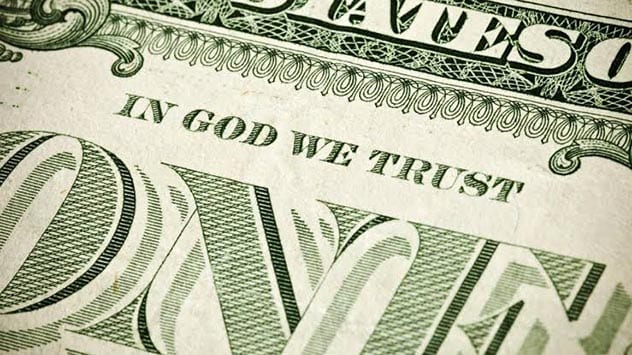
Ben Franklin designed the continental dollar coin in 1776 and it bore thirteen stars to represent the thirteen colonies. Being a funny man, he also included the phrase “Time flies, so mind your business” on the coins. It was not until 1865 that “In God We Trust” was legally allowed to be added to American currency, though earlier forms included the phrase “God and our right”. There was actually a lot of discussion around whether to include “In God We Trust” on the currency and from time to time it fell out of use. But then in 1908 it became mandatory for the phrase to be placed on all coins or notes upon which it had previously been printed (though it was still not required on denominations that had never borne the sentence). And then in 1956, President Eisenhower signed the law making it compulsory to include it on all US money.
9 US Dollars Aren’t Greenbacks
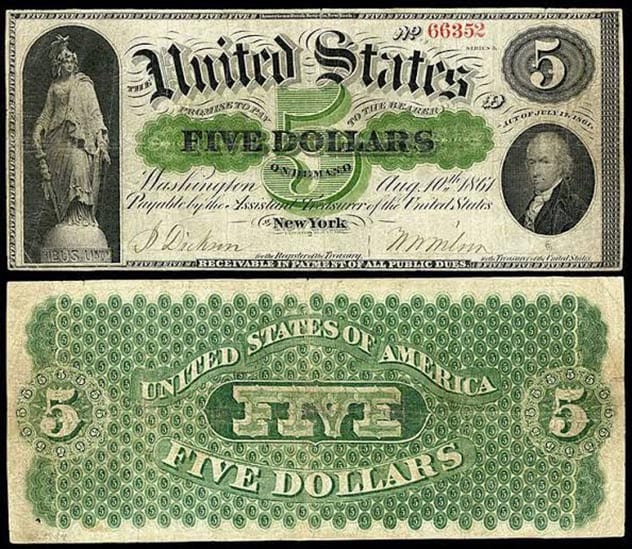
Current US dollars aren’t greenbacks. Greenbacks were dollars created and used by Republican president Abraham Lincoln in the 1860s. They were created out of necessity as the union was going to fast run out of money to fight the civil war. So in 1861, congress permitted the printing of 50 million “demand notes” which were printed with green ink on the reverse—thus leading to the coining of their famous name. It soon became apparent that these would also not be enough to fight the war so, reluctantly, President Lincoln began issuing full legal tender US dollars (also printed in green on the reverse side). Despite the fact that these (and a variety of other notes through the course of US financial history) are no longer printed, they all remain legal tender. Though if you find one it may be worth more if you keep hold of it for the historic interest.
8 Rare Bills
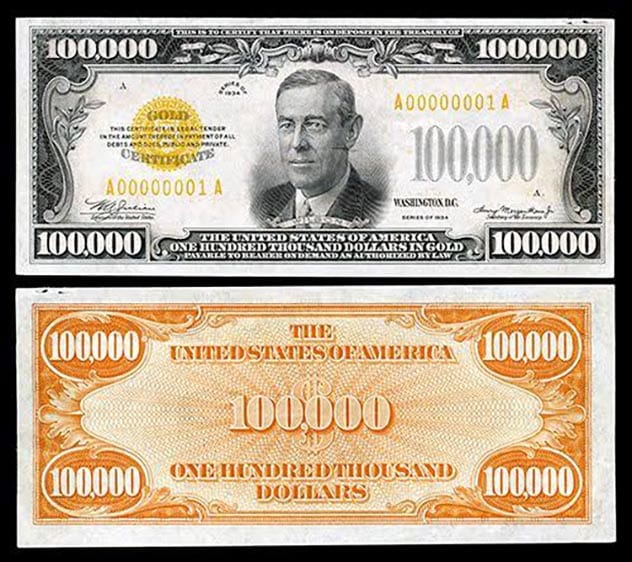
Rarely seen US denominations exist or have existed in the past. Pretty much everyone knows about the $2 bill now, so you can no longer use it to prank people, but another lesser known (and definitely less likely to be seen) note is the $100,000 that was printed in the 1930s for use between banks as gold notes after the abolition of private gold ownership (these are still illegal to own). These notes made it easier for the US government to rob the entire nation and hand its wealth over to a private company with secret ownership (more on that soon). At other times there were also $500, $1,000, $5,000, and $10,000 notes all of which remain legal tender to this day, but—like greenbacks—these are worth more to collectors than their face value so don’t spend them!
7 Graybacks and Redbacks
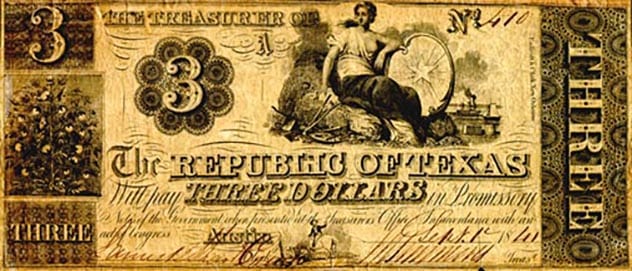
While we’ve all heard of the greenback, lesser know are the grayback and redback. The grayback was the currency of the Confederate States of America and 1 million were issued just prior to the start of the civil war. They had no value beyond the promise of the Confederate States government to pay out in the event of winning the civil war or forming a treaty with the United States. Their value fluctuated dramatically as battles were won and lost, with a massive 20% devaluation occurring immediately upon the loss of the Gettysburg battle.
And then there is the redback. The redback was the official currency of the Republic of Texas issued in 1839 and 1840 to help cover the costs of the national debt. In all, they issued currency in the following denominations: $5, $10, $20, $50, $100, and $500. The bills were called redbacks because of the shade of the ink used to print them.
6 Dollar Coins
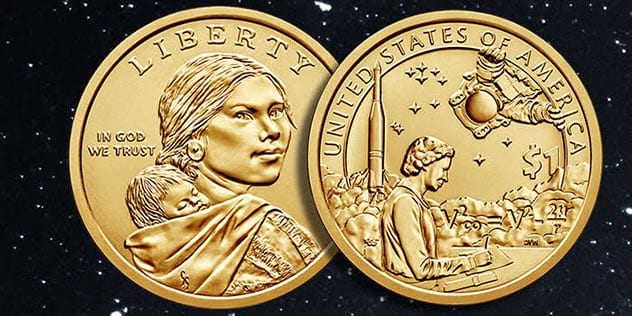
This is where it all got its start. The Spanish dollar (called the “piece of eight”: Real de a ocho or peso) was used throughout pre-revolutionary America and was also widely used around the world—so much so that it was effectively the first global currency. It remained legal tender in the US even beyond independence until 1857. The word “dollar” comes from “taler” the name of a coin first minted in the 16th century and named for Joachimsthal, the place where the silver for the coin was mined. The $ symbol’s origin is unknown with the best guesses being that it is an aberration of the P and S from Spanish Pesos, or that it is simply a distorted variant of the number 8, referring to the “pieces of eight”. These days the ubiquitous silver dollar has morphed into a gold dollar along the lines of dollar coins found in other nations. The American dollar coin (pictured) is not frequently seen despite being issued as change by a number of public transport systems such as the New York metro.
5Money vs Currency
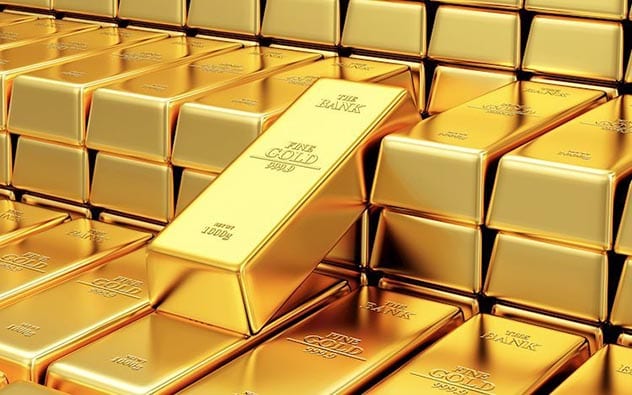
Before we continue, we need a little primer: money is not currency and vice versa. Here’s a good summary of what money is:
Medium Of Exchange: It is widely accepted as a medium of exchange
Portable: It can be carried along and exchanged.
Durable: It can be used a number of times without degrading.
Fungible: Its one unit is equivalent to another.
Divisible: It can be divided into smaller units of value.
Store Of Value: It should maintain its purchasing power.[1]
Gold is traditionally an example of money. It meets all of the above criteria. But what about the cash in your pocket? That is not a store of value for reasons that will become apparent as you read. The cash in your pocket is currency. It stands in place of real money and it is a very useful thing when greedy governments can manage to keep the supply stable. But usually they can’t.
It used to be that the gold standard gave us a finite amount of money against which we could peg our currency. But in 1971 Nixon shocked the world by causing the US dollar to float with the promise that the money supply would remain stable. This meant that America didn’t have to exchange US currency for physical gold. The problem is that as more demand arose for government spending, more money got printed. When you print new currency it is called inflation and it devalues the existing stock. If the government doubled the currency supply tomorrow, all the cash in your pocket would be worth half. It is like a stealth tax.
Quantitative easing in 2008 did just that: it massively over-inflated the supply of US dollars. That currency had to go somewhere so it ended up being pumped into the stock market and led to the current situation in which stocks are listed with values that make no sense at all: zero profits with mega stock prices. This does not bode well for the future.
4 No One Knows Who Owns The Private Banks
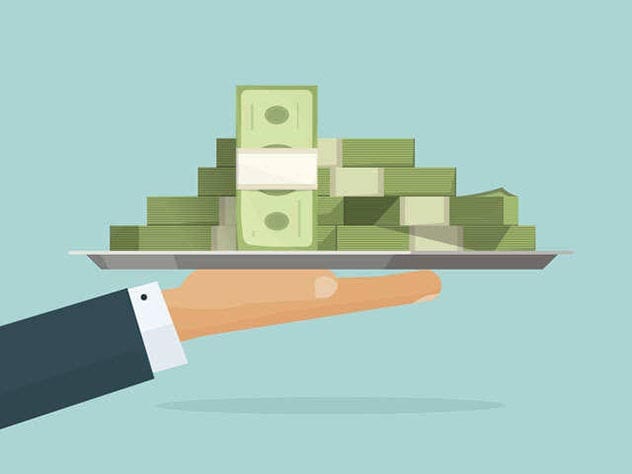
Currency is printed by the privately owned Federal Reserve bank. The fed is not a government institution. It is owned by a group of state federal reserve banks, and in turn, they are owned by . . . well . . . no one knows! That’s right: the control of the US dollar is almost entirely in the hands of a secret group of people. All we know for certain is that the current bank was created on December 23rd 1913 with most democrats voting to create the bank and most republicans voting against creating it.
It is the third central bank in the US with the first being created in 1791 when George Washington signed it into creation at the urging of Alexander Hamilton. Its charter expired in 1811 and five years later, in 1816, James Madison re-instated it as the second US central bank which lasted until 1837. After that there was no central bank until the creation of the current fed. Interestingly, during this time of no central bank, Andrew Jackson became the first and only president ever to pay off the national debt.
3 It Is Made From Thin Air
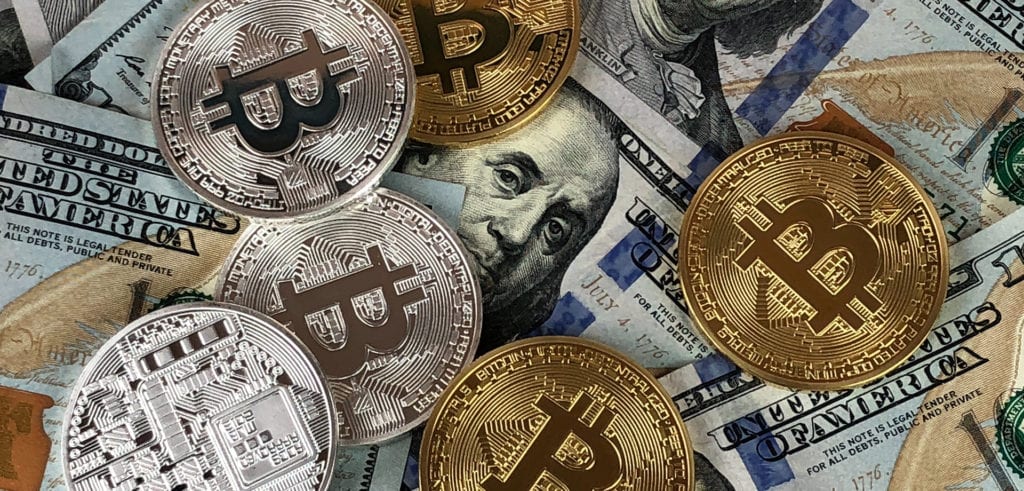
Here is a very simplified explanation of how currency comes to exist: the US Treasury prints a thing called a Treasury Bond (t-bond) which is a promise to pay the face value, plus interest (you get paid your interest annually and the t-bond eventually gets paid off: usually 30 years). The Federal Reserve bank creates line-items in its spreadsheets which effectively equals a bunch of currency (without physical form) and uses it to buy the bond from the treasury department. Treasury can then print cash and mint coins. Suddenly currency has come into existence from nothing except a promise of repayment with interest. So every dollar in circulation right now is a debt promised by the treasury to the holders of the treasury bonds (the fed and the public). The fed holds $2.5 trillion of U.S. Treasuries, which is roughly one-sixth of U.S. debt held outside the government.
2 You Pay Tax Because Of It
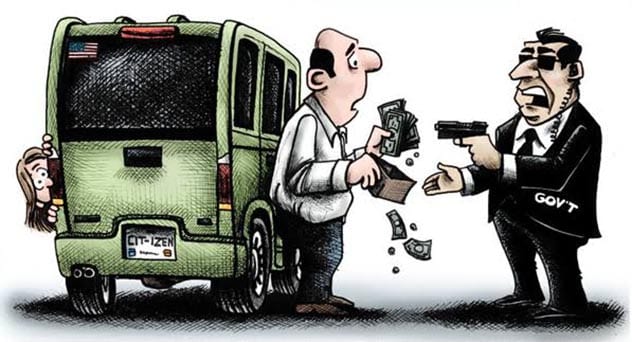
This is such a hard one to comprehend. Someone has to pay the interest on the treasuries mentioned in the previous item, but the currency comes from the fed: so where does the currency come from for the interest? Tax. In 1913 both the federal reserve bank system was created, and the Federal (with a capital ‘F’) government instituted income taxes. Those taxes are used, in part, to pay the interest owing to the private bank for the treasuries it owns. By now you might have noticed something quite significant: this is a legal Ponzi scheme. The treasury makes currency out of thin air to pay interest on the currency it already made out of thin air. We all know what happens in a Ponzi scheme eventually.
So here’s the golden question: why doesn’t the treasury just print the currency like it did in the old days and eradicate the interest component? Abraham Lincoln did it. Garfield hated central banking and (paraphrased) said that “whoever controls the money of a nation, controls that nation and is absolute master of all industry and commerce.”[2] McKinley was bitterly against a fiat currency. They say JFK was planning to restore money vs currency. These guys didn’t just hate central banks . . . they had something else in common. I wonder what it was?
1 The End Is Nigh
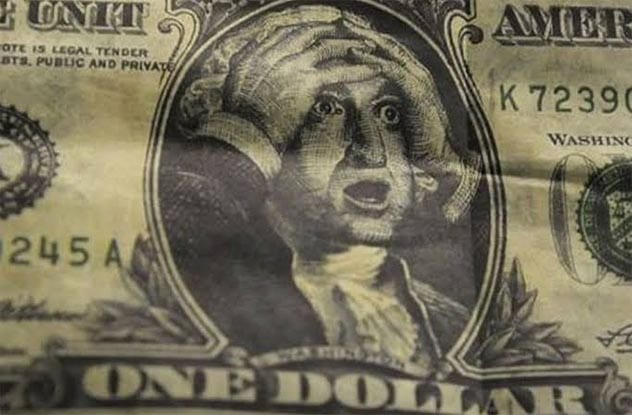
Remember when I explained that the Fed owns all those treasuries? Do you want to hear something scary? From 2008 the economy nearly died as the property market began collapsing—taking the banking sector down with it. So the government, in conjunction with the heads of the banks and the federal reserve bank, came up with a plan: quantitative easing. In its most simplistic form the idea was this: the fed will buy all the bad mortgages. This, they discovered, was a clever little tool they could use again later when the economy looked like it might falter. If a company looks like it could go down and take the economy with it: no problem, the fed can just bail them out with stock buys.
This, of course, removes risk from the free market which leads to terrible behavior. What we have now is not free market capitalism: it is central-bank driven pseudo-capitalism. Companies do not thrive because of their profits: they thrive because a cabal of unknown bankers is funneling money at them. Occupy Wall Street had a lot to do with rejecting this idea. Diverting people’s attention to other more trivial matters is very much in the bank’s best interests right now. Do not peep behind the curtain.
President Trump frequently praises the state of the economy, and I understand he is trying to fulfil a job of stoking consumer optimism, but he is dead wrong. Despite what he says, we are on the edge of a catastrophic depression because the federal reserve is printing money and buying up bad stock all over the place to hide what is coming. In 2008 the fed kicked the can down the road; in 2019 we are nearing the end of that road.
+ Root Of All Evil
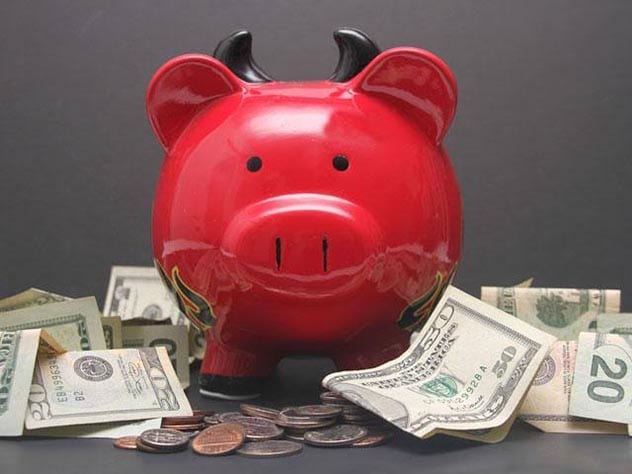
And a bonus item that is not specifically US-related: “Money is the root of all evil!” Clearly the Judeo-Christian religions hate money. Not only is it the root of all evil, but God himself said that rich people can’t go to heaven (you know the old “camel through the eye of the needle” bit). Well there are two issues here. Let’s start with the first: the Bible doesn’t say that at all. Here’s what it does say in 1 St Timothy 6:10: “For the desire of money is the root of all evils; which some coveting have erred from the faith, and have entangled themselves in many sorrows.” In other words, because of their love of money, some people have (and will) wander from the faith and become evil. Money itself is not condemned.
As for it being easier for a camel to get through the eye of a needle than a rich man into heaven: this is clearly a rhetorical device being used to illustrate how difficult it is to remain good when money is abundant (it is basically a corroboration of the “root of evil” statement.) So if you’re rich: enjoy it! But be good to others on the journey.
Here are two great follow-on lists for you: 10 Good Reasons to Embrace Poverty, and Top 10 Tips To Prepare For A Depression.








